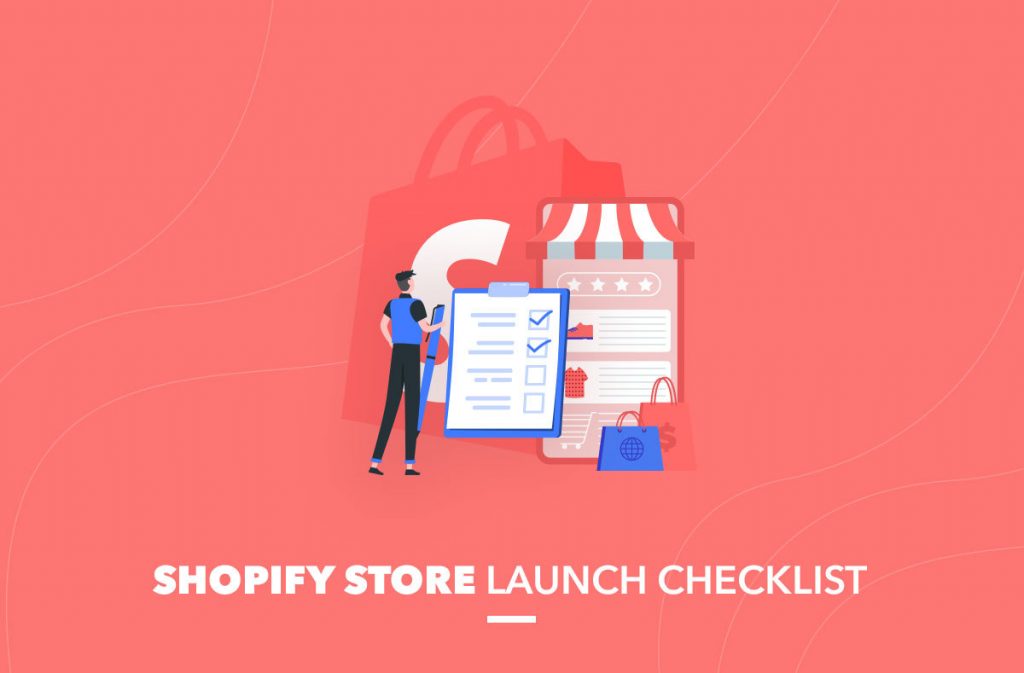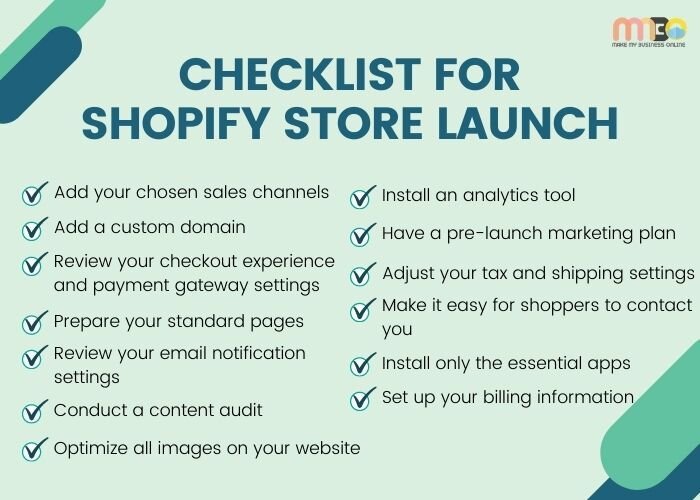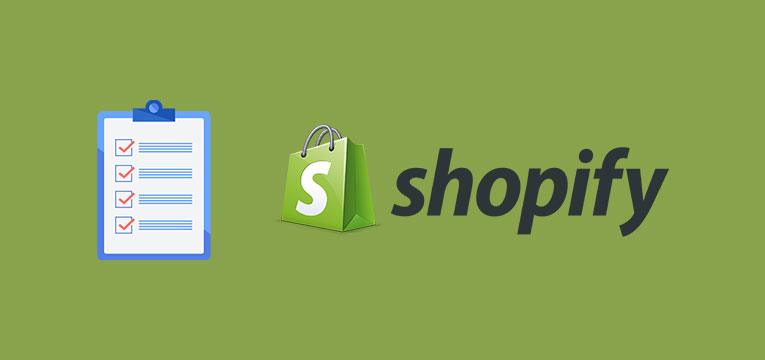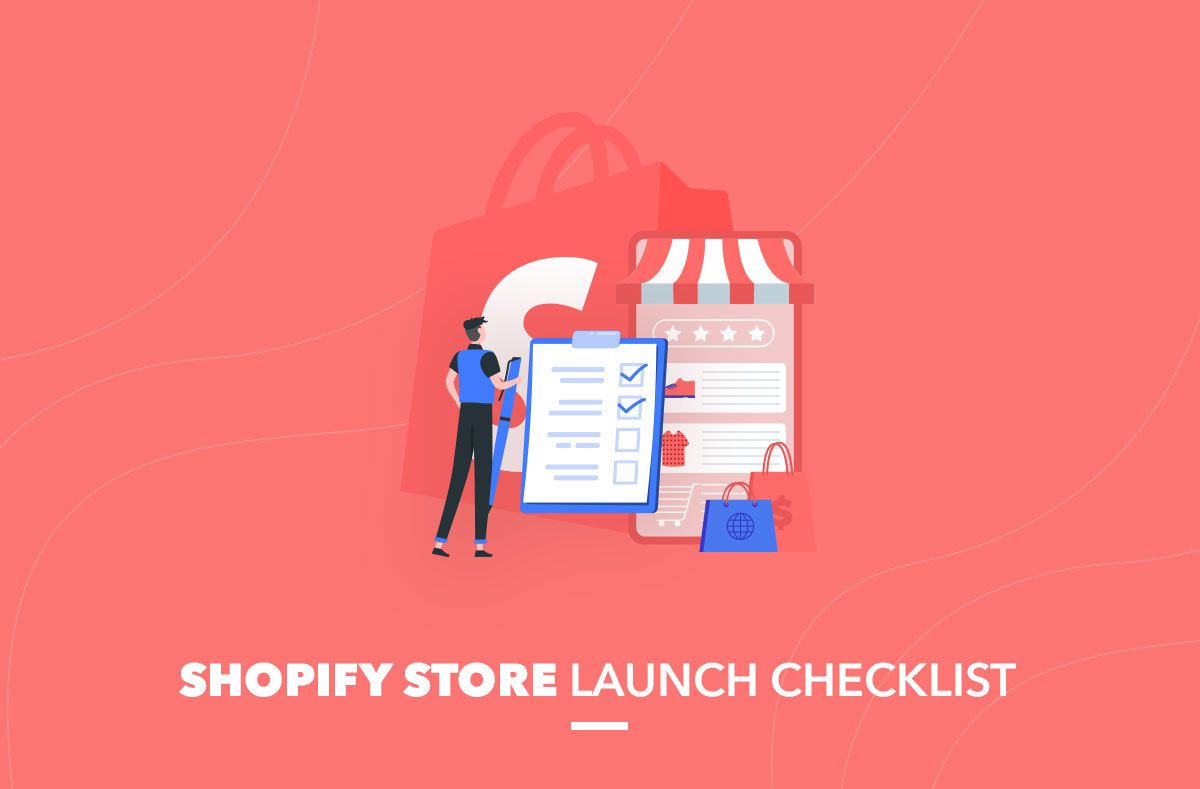
It is so awesome to realize that you have a Shopify store up and running. When the products are available for sale, it feels like a moment of glory. However, there is a road between an idea and its realization. Shopify Store Launch Checklist is going to guide you through the process of setting up your store to getting first customers. It is important to understand what difficulties are there on the road and how to get rid of them before they bring you any harm.

Why a launch checklist is so important
Generally, a checklist is important for everyone, but for a business owner, having a checklist before the launch means a more accurate launch and therefore nearer profits. A checklist helps to advance the process of business building and to ensure nothing is forgotten. Even the smallest detail that might not be evident but really important is included in the checklist and makes the difference. Thus, checklists help to reduce the chance of having an error.
When it comes to crafting a checklist, it is important that it is precise and specific. Also, checklists need to be effective and easy to use even in complex situations. In addition, a checklist should provide the most crucial steps that need to be performed to get the goal done. Above all, a checklist should be practical and help even the biggest professionals to get their things done.
Your Simple Shopify Checklist
For your Shopify checklist, there is a need to know several important things, including the feedback and demographics of your customers, develop a marketing plan, and have a corporate brand image already done (the last one might be the trickiest).
Know where your customers are
Having sales channels identified is the first step towards a successful marketing campaign. Simply knowing where your customers are, allows you to target them better. The sales channels are not necessarily about social media, but also about selling your products on multi-venture international platforms, like eBay or Amazon. While Shopify allows managing all the inventory through its channels, it is easy to start selling on any online platform out of these ones.

Today, multi-channel retail is thriving because customers tend to choose products and services from multiple vendors, and it is important that they can choose yours, even if they are sold on another platform. International platforms offer a seamless shopping experience, which is a huge benefit for you and your customers. Adding any of these is easy to do during the Shopify setup, so think about connecting a variety of platforms to power up your business.
Collect Customer Feedback
When already selling, it is crucial that you build long-term relationships with your customers. Collecting and processing feedback is one of the ways to show that you are dedicated to providing the best service to your customers. Hearing the feedback, fixing the issues, and working on the seamless experience provided to your customers is one of the most important components of the successful work of your business. Sometimes, the customer feedback might give you the insights that are helpful to embrace the needs of your target audience better.
A content schedule and marketing plan shouldn’t be excluded from your Shopify store launch checklist
Of course, marketing is important for growing your business. What’s the point of selling great things if no one knows about that? Thus, having a marketing plan is a must. Inevitably, the content schedule should accompany the marketing plan too because what’s the marketing without content? Content is a king of marketing, so there is a need to plan accordingly. All forms and types of brand promotions need to be included in the marketing plan and content schedule.
When planning on marketing and content, make sure your ideas are aligned with holidays that are celebrated by your target audience and the seasonal demand for products and services. Keep in mind that when delivering good content gets harder, you might outsource writing, and having a content plan is a necessary step for it. Also, when writing and promoting your content, make sure you track the performance of the texts so that you can improve results in a timely manner.

Always remember that Upwork and Fiverr have lots of freelancers ready to write for you, and there are a variety of apps that are helpful to plan content in advance, such as Socialpublish. The use of freelancer work and publishing apps with the schedule set up is going to save you the time and effort necessary to develop the business further.
Incorporate your brand image
When developing your online store, think carefully about developing your brand. It is not good when your store looks like a Shopify store. When your store looks like a generic Shopify store, you are not associated with your brand, and it is no good for your image. At this point, the better you stand out from the rest of the stores, the more your customers are likely to remember you and your products.

To avoid looking like a generic Shopify store, you might want to develop your own logo and color scheme, create and use a custom domain and use individually crafted fonts. In this case, branding might help you to promote yourself through social media and even at various locations, billboards, etc.
Make Your Transactional Emails Work for You
Think about setting up the interaction with your store through transactional emails. These are the emails that are sent to the potential customers who interact with your store. Most often, these are emails that are sent for abandoned shopping carts, etc. You can also set up welcome emails, thank you emails, reminder emails, notification emails, and many more. These are going to bring the customers to your online store. Moreover, you can even ask your customers for feedback with the request emails.
These emails might be personalized, and this makes them stand out from other mailing lists and standard emails. These emails might be sent with Save My Sales and Spently, which allows you to minimize the time spent crafting emails. Practically, there are a variety of apps that help to build your emails from customizable themes and impact the behavior of your customers.
Locate your analysis tools
While analysis tools are not a must when building and launching the store, they help the store to develop. If you want your Shopify store to be successful, you need to track its performance and find out which behaviors are beneficial. Therefore, analysis tools are the best way to find out and catch information about your customers. One of the most common choices is to use integrated Shopify Analytic tools. These tools cover the basics and show the return rate, conversion, and other characters of the customer flow.
Often, Google Shopping and Merchant Center are used as tools to analyze and scale the business. For starters, it is a good idea to use these. Later, you might want to switch to a more complicated tool that helps you more on your way to scaling your business up.
Have a pre-launch marketing plan
When you have already developed your marketing plan, make sure you have several steps to do before the launch. This is called a pre-launch marketing plan. When crafting your pre-launch marketing plan, think about the steps to follow to inform the maximum number of people about your store and your products available on sale. For example, you might want to start with the video to go viral to increase your brand recognition.
Test your store for every possible outcome
One more thing to do before the launch is to test your store as a customer, for every possible result of using the store. Thus, you will see the customer’s perspective when using your store. With such an experiment, you will see how fast your website is and how well your store works when visiting it as a buyer. The store and its content should be easily accessible and readable because it is what determines the user-friendliness of your store. You want to admire what you created, right? Testing the store yourself will help you do that.
Install only the essential apps
Essentially, when crafting your store, think about installing only the most essential apps. Truly, the Shopify app store has lots of items but think well before getting any of them. While some apps are helpful some might not make any sense at all. The rule of thumb is to install only the apps that you need to most and add others later when needed.
Make customer support simple and effective
Keep the two-sided communication window open. Make your customer support simple and effective. That said, you need to have all your contact information easily accessible form on all pages of your online store. For example, live chat and a phone number should be clearly available on any page so that the customers can contact you in no time. Having contact features open to your customers is a great idea to show their value to you. Customers are going to appreciate it and contact you before leaving the store, which is great for your sales.
Conclusion
So, are you ready? If you are not feeling ready, it is totally okay. No one actually feels ready. So set up your launch date, and go ahead, you are going to be quite successful if you have everything from the list settled. We at SOFTLOFT know that it is only the beginning of your fantastic adventure of running an online store, and you are going to admire it. As we know from our experience, the launch is the most difficult thing, and further development is a matter of time and effort, and we can help with it. Just contact us to get quick and professional help.



